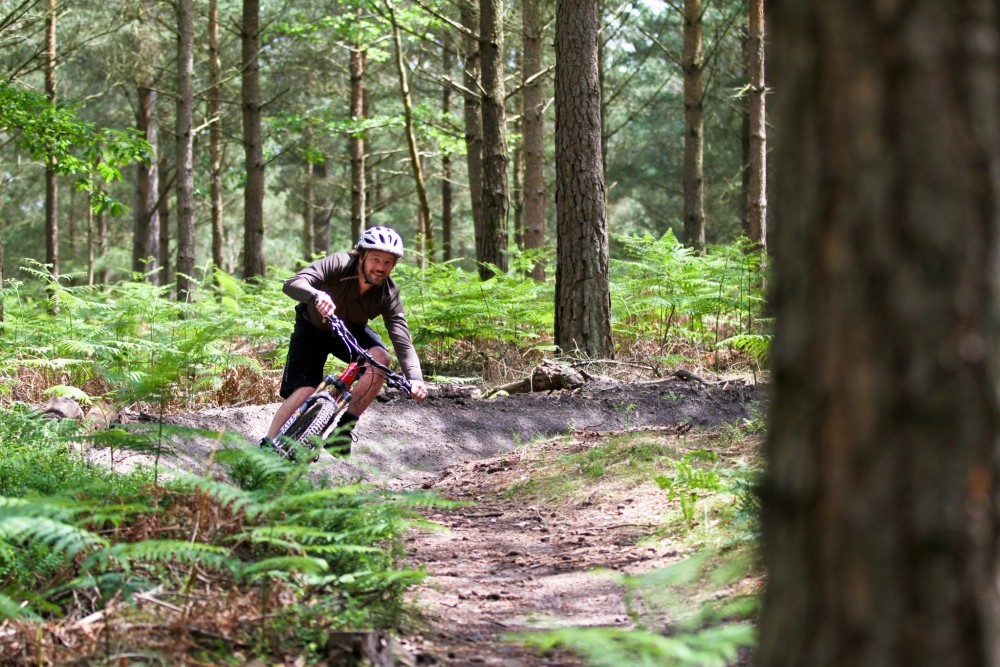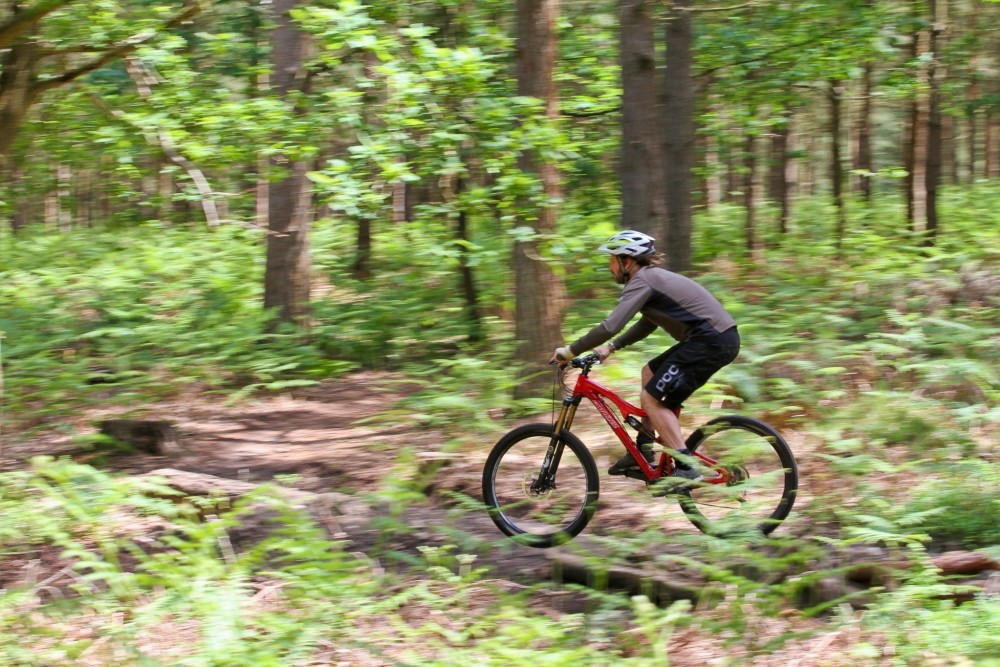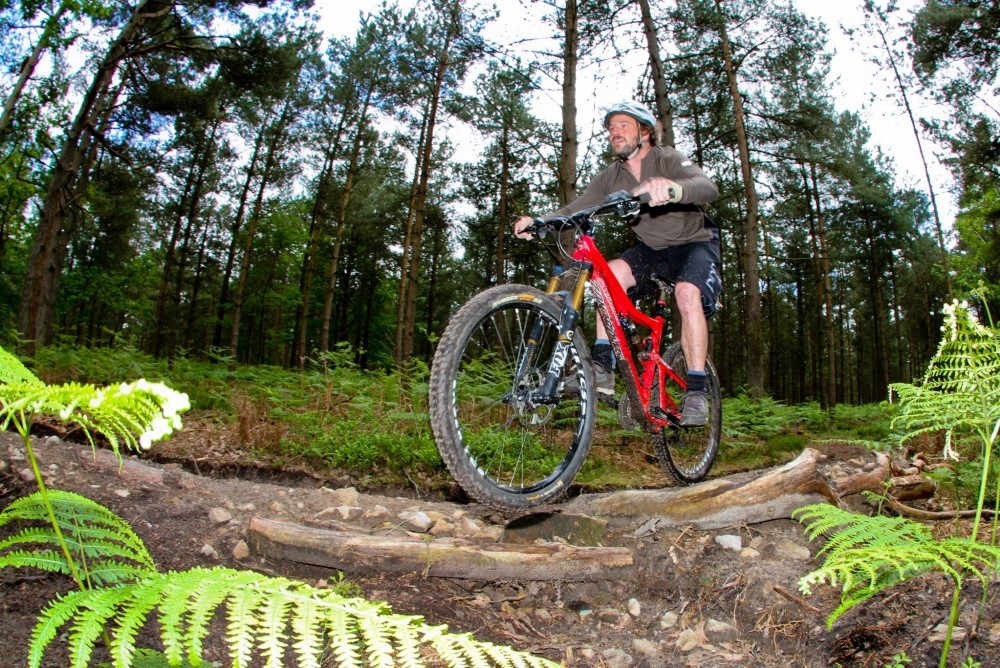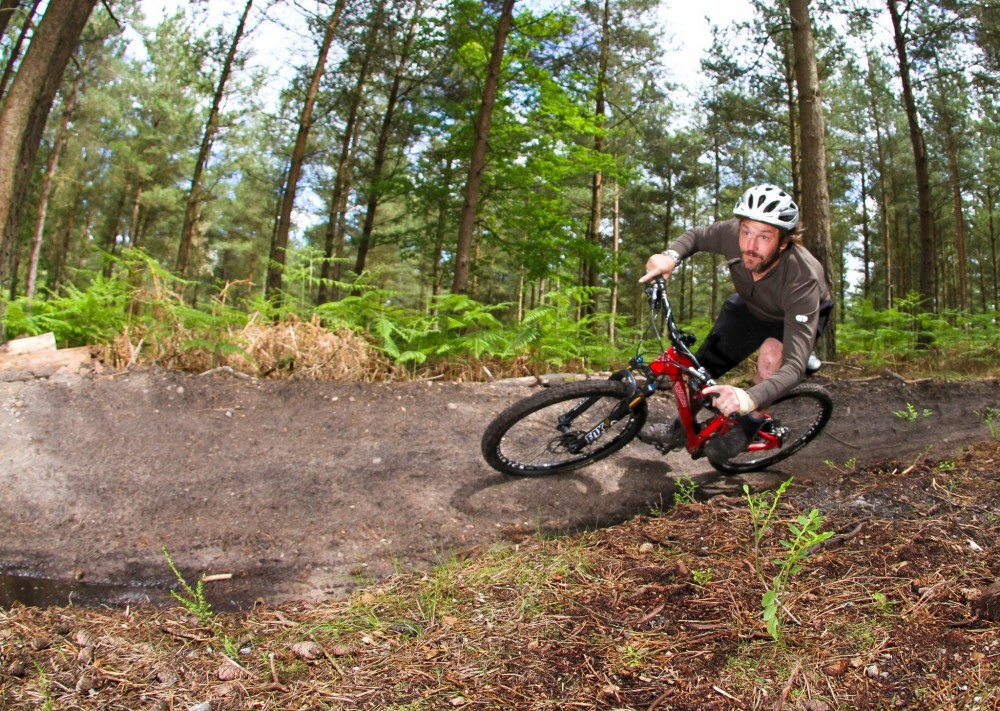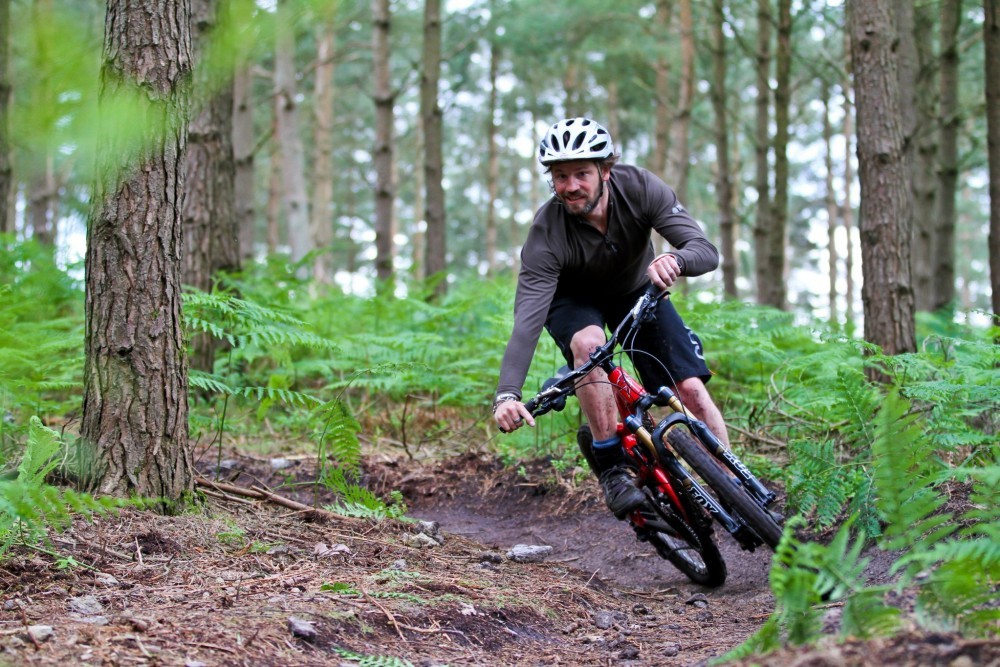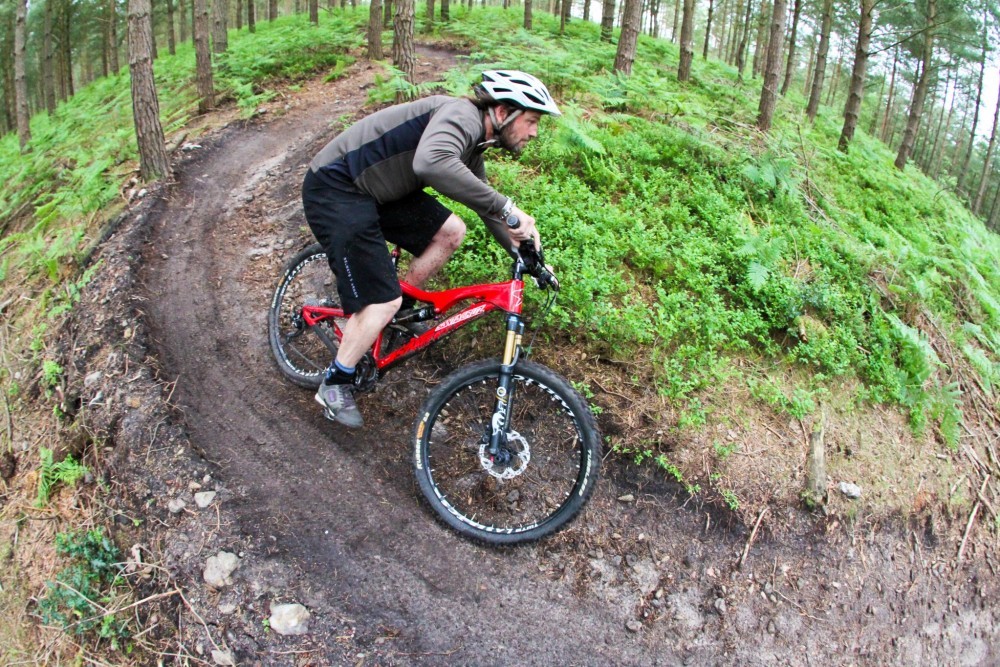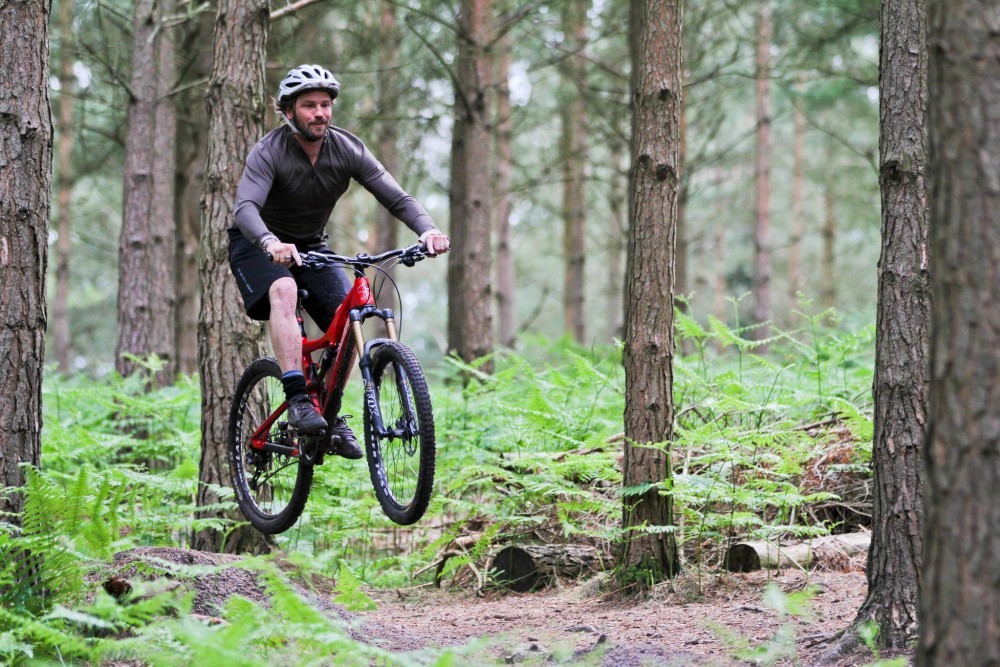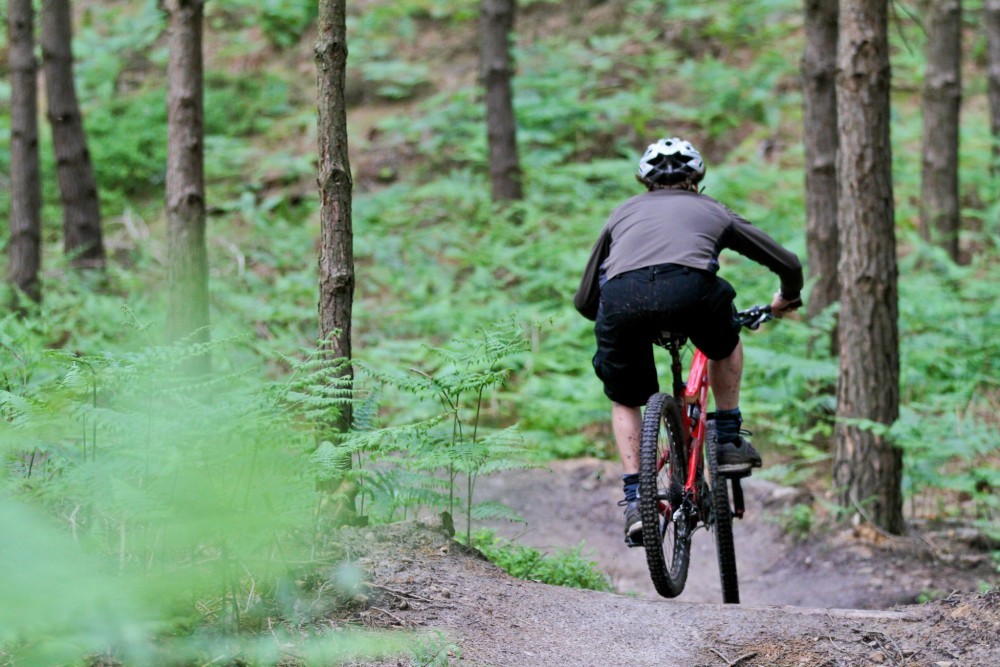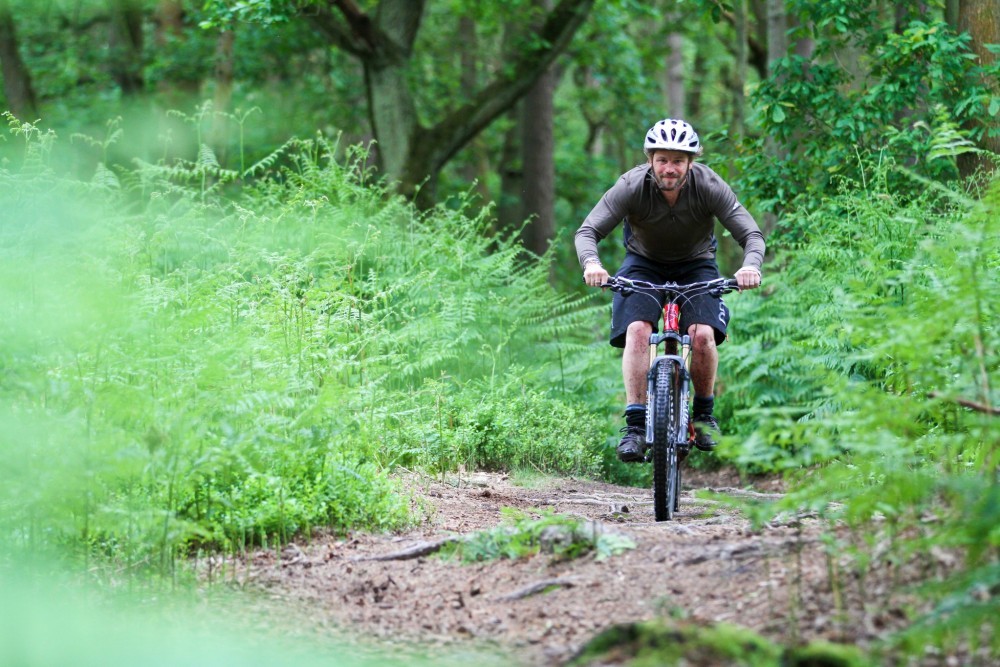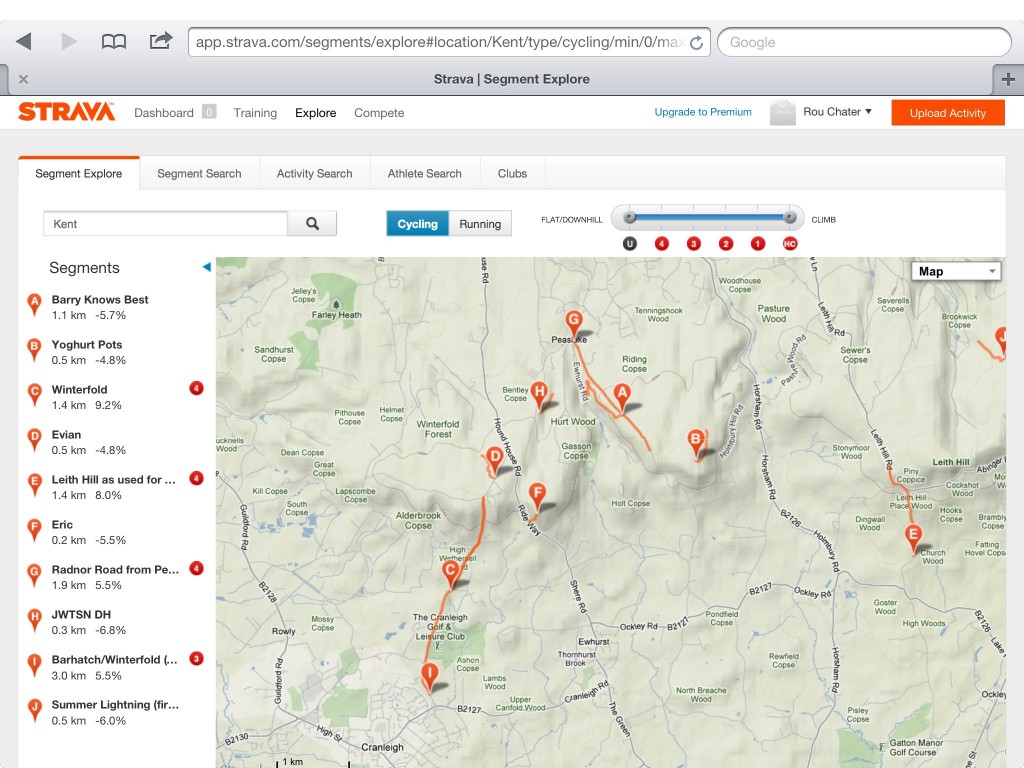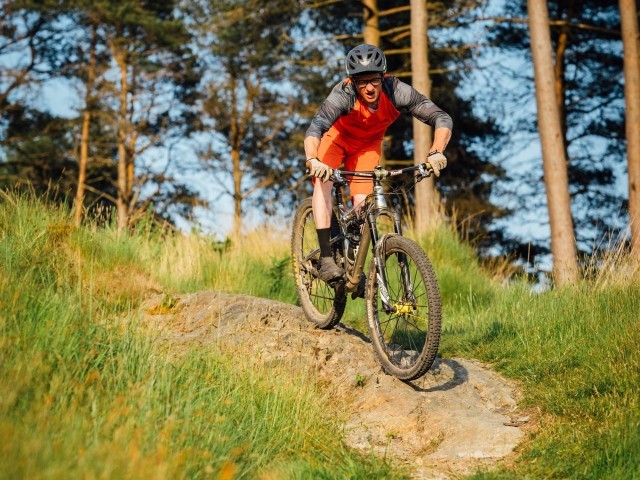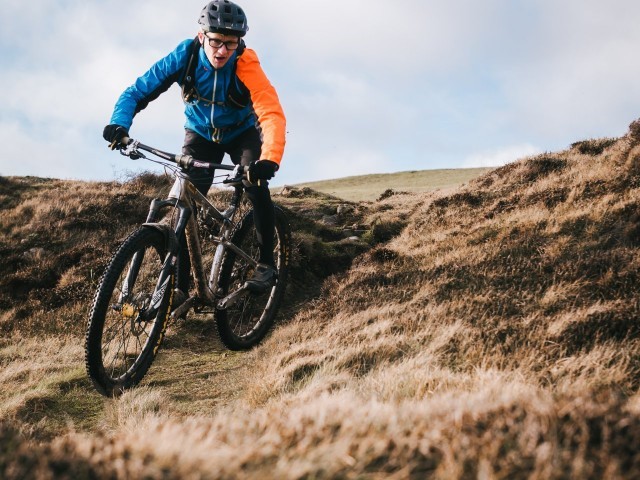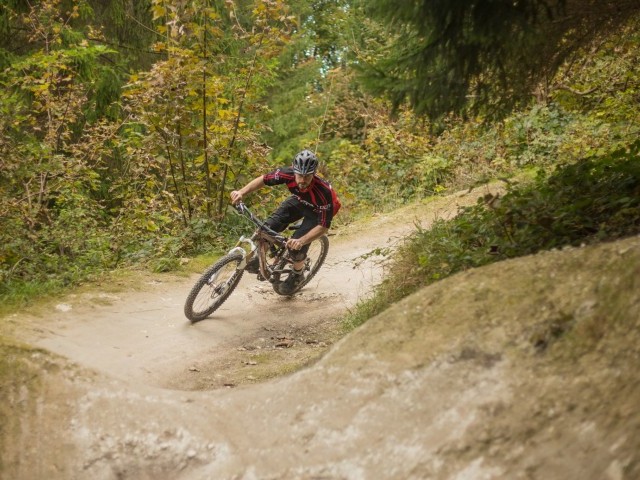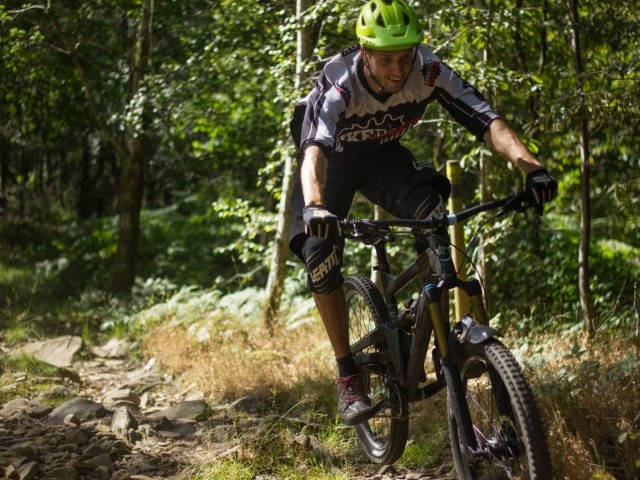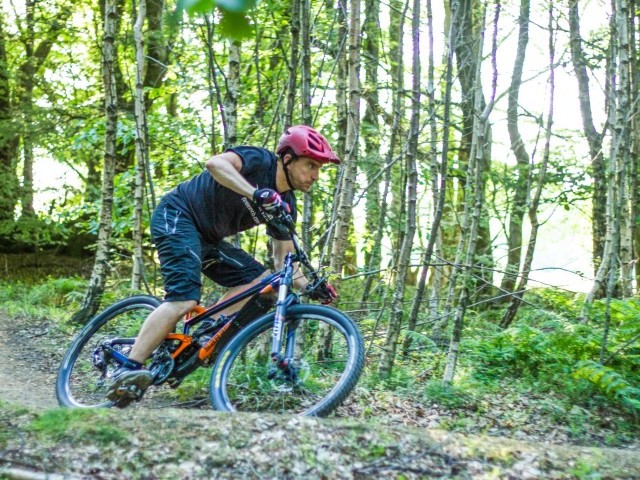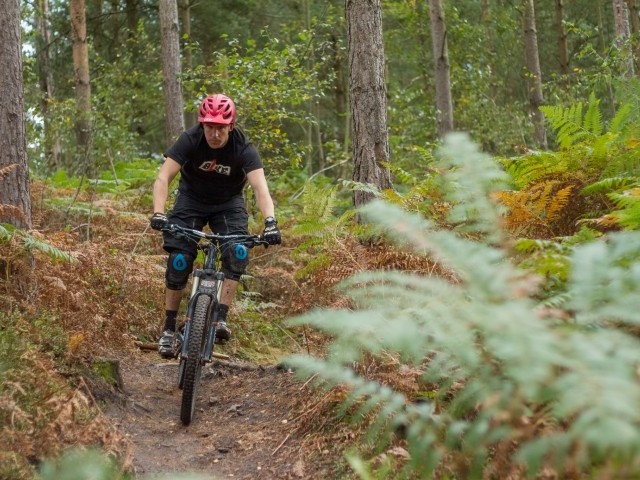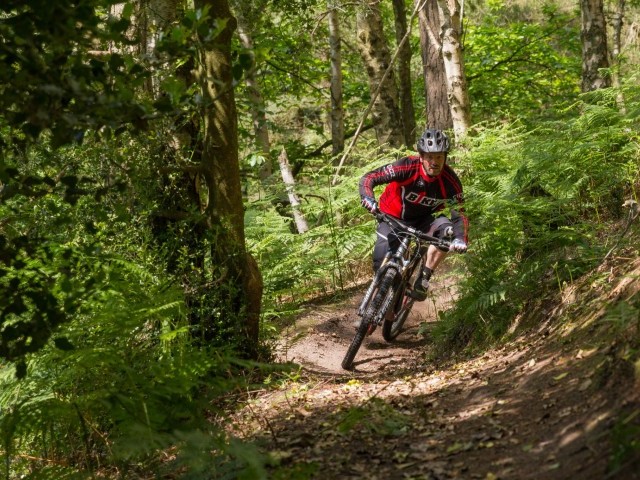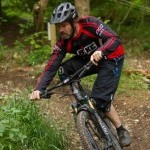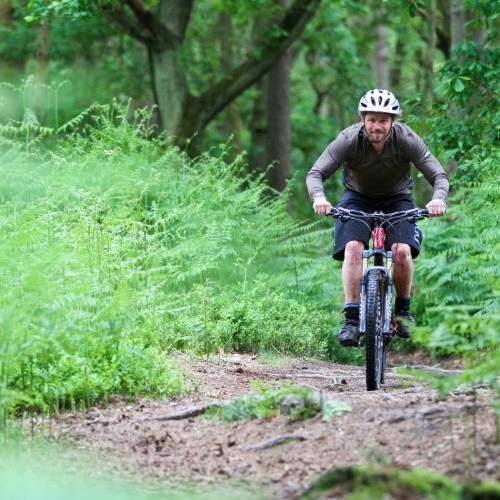
Strava Be In The Pub
Technique / Terrain
Introduction
When the cycling press describes something as the 'technical innovation of the year,' you might expect them to be referring to electronic shifting, belt drive, 11 speed, clutch derailleur or perhaps another life-changing adaptation to wheel size.
In this case however, the focus of such high praise was something as simple as an App.
Strava itself is not vastly different from some of its predecessors that offer a GPS tracking for rides, runs, walks etc, but it does incorporate one key ingredient that others had overlooked, setting it apart from the others in terms of both popularity and impact. That element is, of course, competition.
No longer do you need to ride nose to tail looping a not-so-enjoyable prepared race circuit, whipped on the climbs and held up on the descents to get the competitive buzz. Strava essentially allows you to race anytime, in any location without any prior organisation or anyone else present.
Strava has indeed taken elements of the cycling community by storm and has already been assimilated as a ‘verb’ into MTB dialogue....'just heading out to Strava some trails,' is an oft heard retort when asking a solo rider of their riding plans for that day.
Rarely does an App change the way people approach things as much as Strava has to the way it’s habitual users now approach their weekend ride (with the obvious exceptions of Angry Birds and office workers of course).
This issues tech is not just about technique but also to look at the technology of the Strava phenomenon; how it works, why it appeals to so many and its positive effects to riding habits. We will also look into its slightly darker underbelly and whether the Strava-shift in rider motivation means riders are somehow missing what it is that lies at the heart of a great ride and as such how Strava can change the very nature of trail riding as well as the trails themselves.
For those that do, or those that have yet to (but like the sound of joining the growing Strava Army), we will of course look at how technique can help you shave seconds off your times. It wouldn't be the technique section without some helpful advice on that front... not in this mag anyway. As usual you'll find embedded videos covering the skills side of things, but as well as text simply supporting the videos, I'll also be taking a moment or so to consider the wider picture, the pros and cons do's and don'ts, the good and the bad (I'll leave 'ugly' to the test editor, he does it so well!).
Obviously you will need both fitness and finesse to gain the "King of the Mountain" status on more technical trails. Although you might struggle to have the time (or motivation) required to up your fitness to the required level, a few minutes practising in the right way a few times a week can have a dramatic effect. Through engaging in some 'deep practise' you can make sure that any and all power available is harnessed in the most efficient manner. Improving some core skills will help you ensure that speed is carried, momentum is maintained, and your riding speed goes from 'dial up' to broadband.
Improved technique will help you climb leader boards faster than a doped-up roadie might climb triathlon world rankings.
On the road, fitness, power and endurance may always thrive over great technique marred by a less disciplined lifestyle, but off road power without technique is only going to work on simple, less technical trails. (If ‘King of the Mountain’s on segments like these fill you with pride perhaps you should stick to tarmac).
Although well maintained, lighter, plusher bikes will play their part in maximising performance, think not only of your hardware but more of the operating system you are running. If you are looking to master the trail and smash Strava, identifying and polishing some core skills is essential. Thinking differently is as much a part of that process as simply doing differently so there may be a need to readdress your understanding as well as your application.
So what is Strava, how does it work, what makes it different and how can you get involved?
Strava is a simple App that you can download for free. It is supported by a pretty slick functioning website and 'in-app' functionality is equally well oiled. Strava allows you to track your routes and compare times over 'segments'. A segment may be a well known trail or loop including a number of trails. Segments range from just a couple of hundred yards to a couple of hundred kilometres. Once someone has logged it, it is there for all to see, ride and compare performance on. A way marked trail known to all, or a clandestine gem that is about to be known to all - Strava has them covered. Any rider can upload a 'segment' and henceforth if you pass through that segment while you have Strava running you can register a time for it for all to see, admire or ridicule.
The Pros
The app developer states, “Strava makes fitness a social experience, providing motivation and camaraderie even if you’re exercising alone”. Here, perhaps, we find one of the primary drivers in Strava's popularity. You can make every ride count, not just race days... In fact you can make every day a race day, but there is no sign-up fee, no-one blocking your path and no ludicrously early start time.
It's like your time on the bike is one long stage race and although you may opt out of segments that gain elevation, you can soon rejoin the race on the next downhilll. Even riding alone you can be involved in a quasi-virtual gravity enduro pitched against thousands of riders.
Whether you just want to track your own progression, see how you fair against your mates, or expose the guy in the office you never see on a bike but always comes in on Monday with tails of 'shredding the gnar' and ‘owning the trail’, Strava lets you do it. Even if you are riding alone, open the App and you're amongst riding buddies, other local riders you have yet to meet and the MTB community as a whole.
Strava without a doubt encourages riders to develop fitness even if it is unknowingly; the desire to improve means that you don't get complacent about your riding, pedalling that little bit harder, rather than just going through the motions. As a tool for motivating you to push yourself progressively harder and get fitter, it works for sure.
Arguably Strava is also opening up the trail network across the continents, tracking and thus mapping literally tens of thousands of miles of trails sanctioned or otherwise. Searching for trails has been made a whole heap easier.
The Cons
Social fitness it may well be. But is it social riding? Getting fit for many is a happy by-product of mountain biking and nothing more than that. To be honest I would probably indulge in regular fixes of mountain biking even if it were to prove long-term to have potential negative side effects.
If you are trail riding for fun, changes in tempo add to the enjoyment, but that doesn't mean flat out is the only way or the most pleasurable. Taking time to enjoy the trail is a must. The vast majority of good singletrack leaves you wishing it was longer. Savouring things you enjoy works in so many other areas of pleasure seeking. I am not suggesting there is not a place for maximising speed but this shouldn't be at the expense of all other aspects of the riding sensation. Flattening jumps, taking the shortest possible line and forgetting to release the odd whoop of delight as you ride might lead to a decline in your enjoyment... particularly if your time doesn't improve.
By riding harder fitness will rise - a good thing of course - but just getting fitter is not necessarily going to make you that much faster. As I eluded to earlier, getting all Alpha Male, pumped up etc. can easily lead to an overly aggressive, overly tight style of riding which lacks fluidity and finesse and is all about mashing gears and firing your big guns till you sweat lactic acid. If you only develop your fitness and overlook skills development you will soon be riding in a manner that is punishing on you, your bike and the trail itself.
On that note many trails are already showing signs of Strava damage. Braking bumps are exaggerated, corners cut and straight-lining is commonplace. Add to this a concentration of activity on particularly eagerly contested trails and the trails themselves will suffer.
Illicit trails don't need advertising, tolerated though they may be by landowners. If people ride ever faster and with less and less control accidents of all sorts will be more frequent and trails will get closed
Social fitness can easily become selfish leisure. Most of the segments are open trail, rights-of-way or trails used by riders of all levels and in many cases other user groups. They are not race tracks. Getting frustrated because you caught up someone perhaps less experienced or confident than yourself is likely to negatively impact on your day as well as theirs. If you have got faster through fitness alone but are riding beyond the limits of your acquired skills you may get some ‘personal bests' by riding teetering between control and major trauma but developing the right skills that result in a faster time is a different matter. Upping some core skills will not only get you better times, but you’ll be doing everyone else a favour and putting some 'Social' back into it.
If you want to give the trails a lashing or thrash your ride buddies times there are many considerations. Here are six of the best.
Know It to Own It
Operating at higher speeds you have less time to make decisions, the more of these decisions that are predetermined, the better. If you know what is coming you can start to ride more in the unconscious. The fewer decisions you are having to make, the higher the speed you will be comfortable at. Strava segments or 'trails' as most of us know them can be broken into a series of sections linked by entry and exit points. These chunks are easier for you to deal with rather than the trail as a whole. If you are really serious, walk the trail, look at lines from different angles, check where you consider entry points and exit points are in relation to sections. When it comes to performing the required skills you have already done your thinking and made your decisions as to where and when to apply them.
Manage Energy
Higher speeds release more of the trail's potential energy. Higher speed equals bigger inputs. Your bikes travel will not increase because you are going fast so you need to do more of the work yourself. Make sure any extra energy you are exerting is not applied tensing every muscle in your body. Death gripping bars etc. is a big no-no. If you and the bike are one solid lump then the forces generated as you bash through sections will be dramatically increased. Like a skier through a mogul field you need to understand how to 'down unweight' softening out bumps and like a skate boarder on a half pipe you should also be able to get heavy when the opportunity arises to generate more power to your pump. Staying fluid when you know you are pushing your limits can be hard to do. Locked into a roller coaster you still tend to grab hard on the handrails as you plunge over the first lip. You know you don't need to but the body still tries to take control and the same can happen on the trail. Keeping a level head and not tightening up as the trail gets more technical might be hard to master, but is well worth the effort.
Flatten it Out
As much fun as it is to go as big as possible off every bump and get air on the vaguest of lips you cannot add drive in the air. Where possible keep jumps lower and flatter (ensuring you have the necessary carry for any gaps of course). Pump transitions for speed rather than lift. Over undulations, rather than taking every opportunity to leave terra firma, get heavy and pump both frontside and backside to gain momentum. The less time the wheels are airborne the more time there is to generate power.
All the gears, but no idea?
Every time you do opt for a pedal stroke you want to get the most out of it. With gearing too low your feet will spin meaninglessly, and another couple of Strava places slip away from you. Poorly geared on the low side you’ll have lots of slack chain clattering around just like a nervous conversation. Plenty of chatter but no meaningful torque. In too high a gear you’ll labour to get any snappy acceleration when the trail allows you a quick blast on the pedals. Gear changes need to be made, as far as possible, at an unconscious level. The right gear at the right time will help you generate speed more effectively whilst also providing you with a stable platform.
“Deep Practise’’
Just as you can break down segments into a series or sections, so too can techniques be broken down into integral skills that can then be polished in isolation. The system of skills development that underpins all of our teaching and these articles, does exactly that. In his book 'The Talent Code' Daniel Coyle refers to this as 'Chunking'. (if you are serious about understanding how talent is best developed or want to develop your own skills in the most effective manner you should read this book). Rather than repeating a technique over and over as a whole, identifying areas where work is required is important. It could be your footwork through corners, your energy management over rooty sections or the pump in your jump that needs work - a good coach should be able to be able to see this in your riding and help you with this. Having identified the skill that is most wanting, go and work specifically on that aspect of a technique on a less technical trail where your focus can be perfect performance of the skill rather than just speed through the section. Coyle calls this 'deep practise' and provides evidence that this is how the very best become masters of their particular field and develop skills to a higher level than those around them. It may seem odd to take the trail out of the equation to a degree but you will learn more and be able to perform better when the stakes are raised and you are applying it in real time. Don't assume you will have to spend more time practising, quite the opposite. You will achieve more in less time.
Speed Control
This is a massive factor in successfully nailing trails and posting the best times. Too slow and you will miss out on your PB, but too hot into a section and you'll loose either emotional or physical control. If this happens, rather than accelerating through sections you will do quite the opposite. Whether it is just a little phantom break or a full-blown clutch at the levers knowing when to generate speed, when to temper it and when to lose it are crucial. You should be looking to accelerate through sections. Crucial to this is the ability to gauge entry speeds correctly and looking right through the section early. The more you develop core skills the more speed you know you can carry. Practising at the highest speed is not always the answer. When developing skills taking speed out of the equation to a degree will enable you to focus on what matters most, the better your technique and the more honed your skills the faster you will be able to ride.
You really know you’re making progress when times start to fall but you feel you are going slower.
There are many ways to reduce times and eek your way up Strava tables, some positive, some less so. Stick to the positive side of Strava, enjoy Strava for sure but don't let it become all-consuming. Don't let fun be dictated by trail conditions, personal bests and KOM's.
On the road riding front Strava is pretty faultless as a tool for both developing your riding, tracking your own progress and how you stand in the grand scheme of things. Its hard to straight line Tarmac, cut corners or find a short cut, it's easy to overtake and riding fast does not impact so negatively on other riders or the segments themselves.
Off-road, taken to their extreme positives aspects of constantly running Strava can become destructive.
In short when it comes to MTB, being a recreational user of Strava may add a new layer to your level of enjoyment but don't think it will automatically improve your level of skills. (Unlike developing skills, which will of course improve Strava times). Most of all don’t become purely reliant on the competitive high to get enjoyment out of your weekly ride. Strava like any addiction can spiral out of control and it will always lead to harder things....even perhaps Tarmac!
Editors Note
Don’t forget to hide your home location, while all this new technology is great for us to analyse our rides and have fun with friends, it also allows thieves to see exactly where you store your precious bikes… The marked rise in bike thefts is in line with the development of technology, and frequently people are “targeted”. Use the app wisely and hide your home location!
This technique article was in Issue 18 of IMB.
Related
By Richard Kelly
Richard Kelly has been riding bikes since forever, and teaching people to become better mountain bikers for over a decade. He’s always out in the Surrey Hills training riders, building trails and riding for himself whenever he gets the chance. His unique perspective on mountain bike technique has earned him fans the world over, with some speculating he is actually Jamiroquai or perhaps Jack Sparrow…






